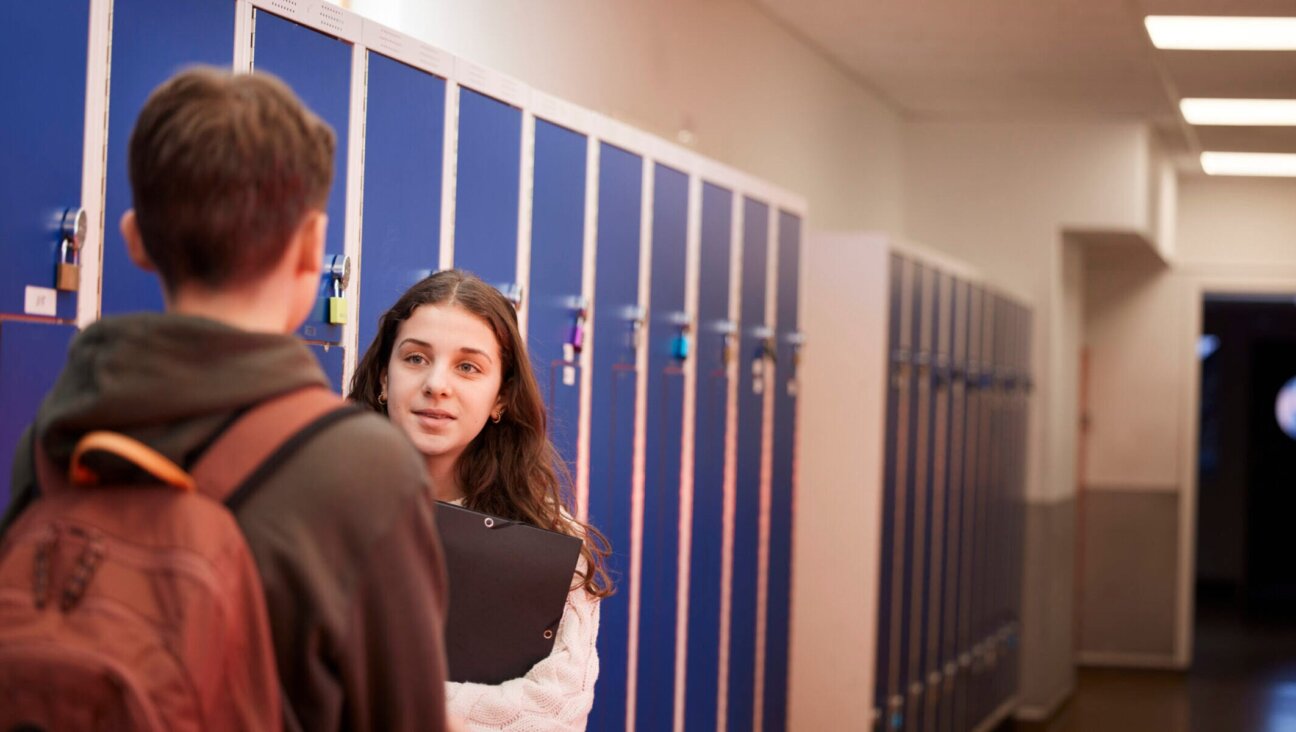What it takes to be back in school—and stay back

Weingarten, right, with students at PS 157 in the Bronx on Jan. 5. Courtesy of American Federation of Teachers
Small things sometimes have an outsized impact. That has struck me as I’ve visited with students and staff in public schools in recent weeks, particularly since the surge of the omicron variant. Ordinary activities—pre-K children playing side by side, students working on a group project, a teacher guiding students through a lesson on conflict resolution, and kids doubling over with laughter—left me with profound gratitude that they were doing these things together, in school. Two years into the pandemic, these small signs of a return to normalcy don’t feel so little anymore.
Throughout the pandemic, teachers and school support staff have been working with parents to meet kids’ needs and build trust. Through this collaboration, along with resources for academic recovery and safety protocols, schools were able to reopen last fall. Even with new cases of COVID-19 averaging more than 700,000 per day for the first time, 98 percent of public schools in the United States were open for in-person teaching and learning last week.
Some schools have had to revert to remote instruction or temporarily close as a last resort because of COVID-19 outbreaks or staff shortages. Infectious disease experts like Dr. Michael Osterholm warn that the “viral blizzard” of omicron infections inevitably will lead to more temporary disruptions. In New York City and elsewhere, many parents are keeping their children home from school. But where best practices are in place—full vaccination, high-quality masks, good ventilation, regular COVID-19 testing, testing to stay in school after exposure, and a nurse in every school—it’s helping to keep children, staff and families safe and keeping students in school, in person.
Educators know that being in school is essential to children’s mental, social, emotional and academic well-being. Parents need their kids to be in school so they can work and live their lives. We are in the third school year affected by COVID-19; our nation needs our kids to be educated in school, where they learn best and can thrive. That’s why the AFT and our affiliates across the country are pressing for safeguards to protect students, families and staff.
Teachers are supporting students in every way they can, while trying to keep everyone healthy. They are exhausted, overwhelmed, stressed and burning out. Teaching is one of the most highly vaccinated professions, yet with the extremely contagious omicron variant and breakthrough infections, school staff are covering for colleagues who are sick or quarantining, and they are scared of getting COVID-19 themselves or bringing it home to loved ones. The shortages of teachers are so severe that some districts are lowering standards for substitute teachers and imploring parents to pitch in.
Teachers are tired of being attacked by armchair critics for problems not of their making and out of their control. What kind of person blames educators—not the virus itself, or failures to contain it, or fights over masking and vaccines? Let’s be clear: COVID-19 is the enemy, not teachers. And not each other.
The AFT held a virtual town hall last week about omicron and schools. Our guests—Surgeon General Dr. Vivek Murthy; Dr. Vin Gupta, a pulmonologist, public health physician and health policy expert; and Dr. Irwin Redlener, a pediatrician and the director of the Pandemic Resource and Response Initiative at Columbia University—strongly agreed that we must double down on effective strategies like vaccines and boosters, high-quality masks, testing and improved ventilation, to keep people healthy and keep kids in school. These esteemed health professionals, with decades of experience among them and knowledge of the latest research and practices, all stressed that the single most important step eligible children and adults can take is to get fully vaccinated (two shots and a booster)—for their own health, for the health of their families and communities, and to help the country finally turn the corner on this pandemic.
Never has “try walking a mile in someone else’s shoes” seemed like better advice. As the pandemic enters yet another year, omicron spikes and frustration soars, imagine yourself in the shoes of people buckling under the strains of this moment: The healthcare professionals who press through their trauma and exhaustion to care for and console patients during each grueling shift. Working parents living paycheck to paycheck, whose children’s school or daycare is closed—again. Young people who suffered the effects of isolation and now are anxious about re-entry. Teachers struggling to care for their students’ mental health, and their own.
We all need grace during these challenging times, and by showing grace to others we can experience it ourselves. Let’s pause to appreciate the “small” things that now fill us up—children playing blocks next to each other, or students laughing and learning together after so much of their lives has been online and on pause. And let’s insist on the precautions that have a big impact on health and safety—and practice those behaviors ourselves.












